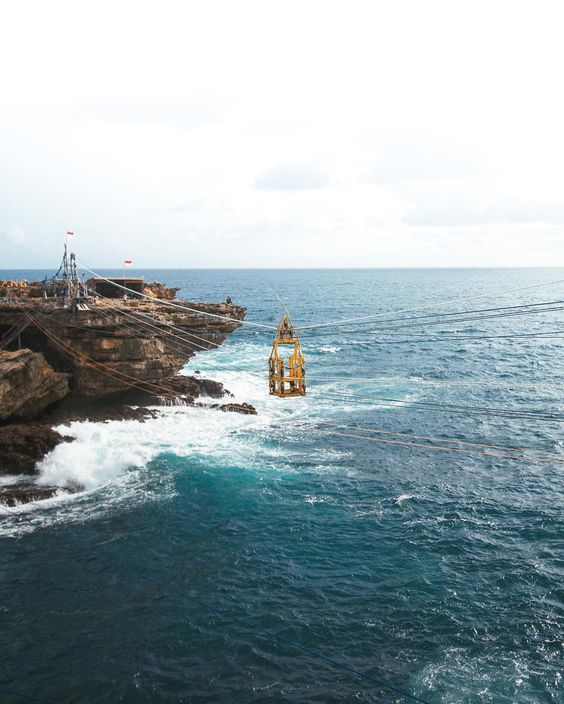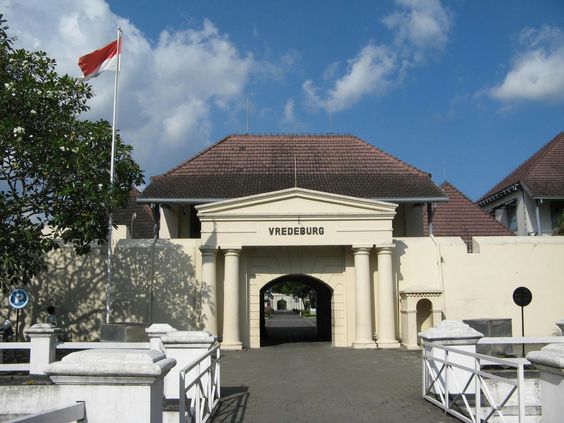Borobudur Temple is one of the wonders of the world located in Magelang, Central Java, Indonesia. Known as one of the largest Buddhist monuments in the world, Borobudur Temple is a silent witness to the splendor of past civilizations. This article will take you on a journey through the interesting history and stunning architecture of Borobudur Temple.
Origins of Borobudur Temple Initial Development

Borobudur Temple, which is thought to have been built in the 8th or 9th century, is one of the most important relics from the Sailendra kingdom on the island of Java. Its original name may have been “Bhumi Sambhara Bhudhara,” meaning “Mountain of the accumulation of virtue on earth.” This temple not only functions as a place of Mahayana Buddhist worship, but also as a place of study and meditation.
The exact history of who ordered the construction of this temple is still a mystery. The most common theory is that Borobudur was built by the Sailendra dynasty under the rule of a king named Samaratungga in the early 9th century.
Conditions of Rediscovery
Borobudur Temple was first discovered by Sir Thomas Raffles, a British administrator in Java, in 1814. At that time, this temple had long been forgotten and covered by volcanic ash and dense forest. A major restoration process began in the early 20th century under Dutch rule. Efforts to restore this temple took years and involved removing thousands of large stones.
In 1973, Borobudur Temple was declared a UNESCO World Heritage Site. Today, this temple is one of the most famous tourist attractions in Indonesia and a pilgrimage destination for Buddhists from all over the world.
Borobudur Temple Architecture

Design and Layout
The architecture of Borobudur Temple reflects Mahayana Buddhist philosophy. The building is designed in the shape of a giant stupa inspired by the sacred mountain Meru, which is believed to be the center of the universe in Buddhist cosmology. This temple has a multi-layered pyramid-shaped structure which depicts the three levels of the universe in Buddhist teachings.
Borobudur Temple has a rectangular base level with relief carvings framing it. Above it are six box-shaped levels, which are then covered by three circular levels. The top level is a large stupa depicting Nirvana, the highest achievement in Buddhism.
Incredible Relief Carvings
One of the most prominent things about the architecture of Borobudur Temple is the thousands of relief carvings that decorate the walls. In total there are around 2,672 relief panels and 504 Buddha statues. This relief tells various stories and teachings of Buddha, including the story of Siddhartha Gautama’s life before becoming Buddha.
These carvings are very valuable historical evidence, depicting Javanese life and culture at that time. They are also an important source of knowledge about Buddhist teachings and the spiritual journey.
Joint System Without Mortar
One of the greatest engineering achievements in the architecture of Borobudur Temple is the use of a stone joining system without mortar. The large stones that make up this temple are arranged in such a way that they lock together without using cement mortar or other adhesive materials. This craftsmanship creates extraordinary stability, especially considering that this temple is more than a thousand years old.
Deep Buddhist Symbolism
The architecture and design of Borobudur Temple is also very full of Buddhist symbolism. Its multi-layered structure represents the concept of samsara, or the cycle of birth, death and reincarnation. Pilgrims will ascend through these layers as part of their spiritual journey towards enlightenment and liberation from the cycle of birth and death.
The top level of the temple contains
The large stupa depicts the attainment of Nirvana, where all suffering and desires are abandoned and one attains true enlightenment.
Visit Borobudur Temple

Entrance Ticket Prices and Opening Hours
To visit Borobudur Temple, you need to pay an entrance ticket. Ticket prices are different for foreign tourists and Indonesian citizens. Usually, this temple’s opening hours are from morning to evening, with slightly different operating hours during Ramadan.
Incredible Relief Carvings
One of the most prominent things about the architecture of Borobudur Temple is the thousands of relief carvings that decorate the walls. In total there are around 2,672 relief panels and 504 Buddha statues. This relief tells various stories and teachings of Buddha, including the story of Siddhartha Gautama’s life before becoming Buddha.
These carvings are very valuable historical evidence, depicting Javanese life and culture at that time. They are also an important source of knowledge about Buddhist teachings and the spiritual journey.
Visitor Settings
To preserve this temple, there are strict rules that visitors must follow. For example, visitors are prohibited from climbing to the top of the stupa at the top level. In addition, modest clothing is required, and the management will provide sarongs for visitors who wear inappropriate clothing.
Tips for Visiting Borobudur
- Come early in the morning: Borobudur Temple becomes very busy during the day. Come as early as possible to enjoy the beauty of this temple without crowds of visitors.
- Bring Drinking Water: Walking around the temple complex can be tiring. Make sure you bring drinking water to keep yourself hydrated.
- Wear Comfortable Shoes: You will be walking a lot, so make sure you wear comfortable shoes.
- Respect Local Rules and Culture: Always remember to respect local rules and culture while visiting this temple.
What to Enjoy at Borobudur Temple

Apart from enjoying the extraordinary architecture and carvings of the temple, visitors can also enjoy the beautiful view from the top of the temple. Borobudur Temple is located on a plateau, so you can see stunning views of mountains and rice fields.
At certain times, especially at sunrise or sunset, this view becomes truly spectacular and creates an unforgettable experience. You can also wander around the temple complex and visit several other smaller temples in the vicinity.
Borobudur Temple is clear evidence of the glory of past civilizations and one of the most impressive sites in the world. Its majestic architecture, beautiful carvings, and historical and spiritual values make it a must-visit place for anyone in Indonesia. By following the rules and respecting local cultural values, you can enjoy an immersive experience at Borobudur Temple that will last a lifetime.





